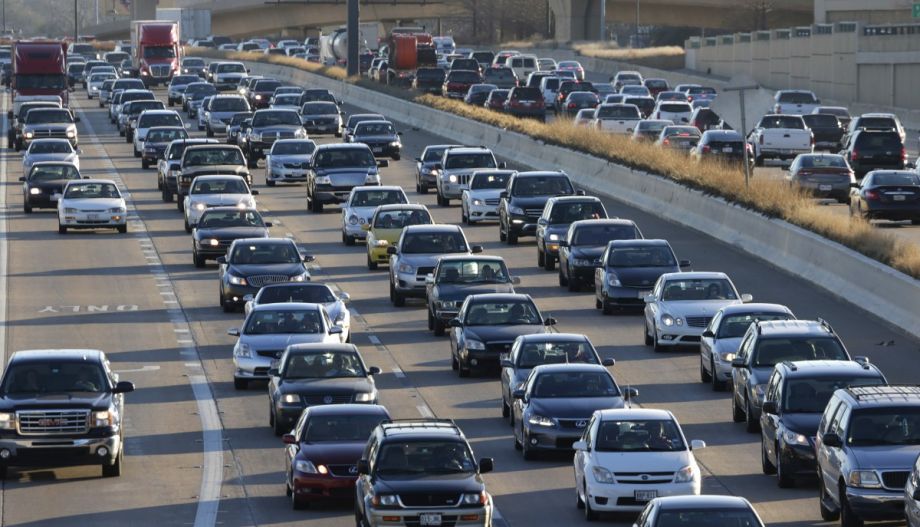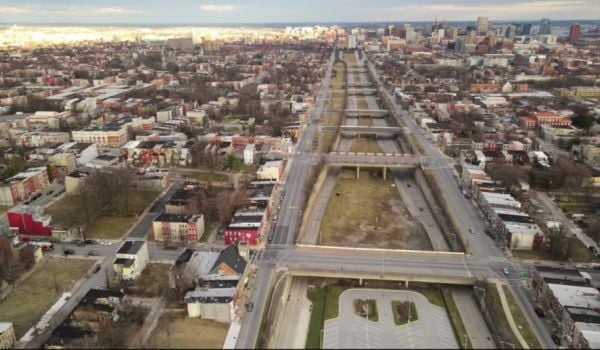For transportation geeks, Halloween came early this year.
A new report claims that traffic congestion is costing us $124 billion a year and is “draining” our economy. But just as those ghoul and zombie trick-or-treaters are actually the annoying but harmless kids from the neighborhood, the claimed cost of congestion is just an annual prank aimed chiefly at scaring the bejeezus out of the gullible.
Stealing a page from the Texas Transportation Institute, which has been flogging this same scare tactic for the past 30 years, a new report, “The future economic and environmental costs of gridlock in 2030,” claims that congestion will impose huge economic costs on the world’s cities. Sponsored by Inrix and written by British economic consultancy Cebr, the report says traffic congestion costs will grow to $186 billion by 2030. And in case that number isn’t big and scary enough for you, the press release announcing the study adds together 20 years of estimates for the U.S. and other countries in order to be able to push the total cost into the trillions.
The report has had its predictable impact on the media.
Money magazine shouted: Traffic Costs You Even More Than You Think—and It’s Getting Worse.
MSN chimed in with “Car-maggedon-the $4.4 trillion traffic problem.”
Forbes uncritically echoed the study’s headline claim: “Traffic congestion costs Americans $124 billion a year.”
These traffic horror stories are of course hardy perennials. Prompted by a similar report five years ago, Time wrote “America: Still Stuck in Traffic,” warning that traffic problems would only get worse.
But the truth is that there’s little evidence that congestion is costly, and if anything, traffic and congestion-related time losses are declining.
Congestion cost claims are based on a discredited methodology that twists some useful data to produce seriously misleading conclusions. The Inrix/Cebr report uses a “travel time index” to compute how much longer trips take in peak hours than in non-busy times, and then claims that the number of additional hours that those trips take — valued at a certain number of dollars — represent a “drain” on the nation’s economy.
But this study is flimsier than a cardboard tombstone. Like earlier scare stories, it is riddled with flaws. The details are spelled out in a new CitySubjects card deck at City Observatory. Here are the highlights:
- The travel time index used to compute costs treats the inability to drive faster than the speed limit due to congestion as a “cost” to commuters.
- The report predicts a trivial increase in congestion between now and 2030 — delay in the average daily commute will be about 25 seconds longer than it is today.
- Predictions of increases in driving and congestion have repeatedly been proven wrong.
- Driving is down: The U.S. experienced “peak car” in 2005, and the average number of miles driven per American has fallen 7 percent since then, from 27.6 miles to 25.6 miles per day.
- Inrix’s own data show that time lost to congestion in the United States has fallen 40 percent since 2010.
- Time lost to traffic congestion is so small for most travelers that it isn’t noticed and has little economic value.
- Building enough capacity to eliminate rush-hour congestion would be virtually impossible and cost many times more than the supposed value of time lost to congestion.
Sadly, while the Inrix report generates plenty of heat, it sheds very little light on the true nature of our transportation system’s performance and how it contributes to—or detracts from—our economy.
But we know how the Inrix/Cebr report will be used: as talking points for the highway lobby to plead for additional public subsidies for expanding road capacity. Decades of experience have shown us that investments in additional roadway simply trigger more demand — and no matter how fast we run on the highway construction treadmill, we still end up with congestion, plus more expensive roads to maintain and, generally, greater levels of sprawl. The result is so well understood that it’s come to be called “The fundamental law of road congestion.”
One of the ironies here is that this year’s report is sponsored by Inrix, which operates the technology to track traffic speeds in real time, providing everyone who owns a mobile device with clever, helpful maps showing current traffic levels color-coded for delay. These maps helps us cope with congestion; and the data they’ve gathered show we’ve actually made huge progress in reducing it in the past few years. It’s a shame they aren’t sharing that good news, instead of trying to scare us.
This article was originally published on City Observatory, a new city policy-focused think tank supported by the John S. and James L. Knight Foundation. Next City also receives funding from the foundation.

Joe Cortright is president and principal economist with Impresa, an economic consulting firm, and the founding director of City Observatory, a think tank focusing on urban economic issues supported by the John S. and James L. Knight Foundation.


_600_350_80_s_c1.jpg)



_on_a_Sunday_600_350_80_s_c1.jpeg)









